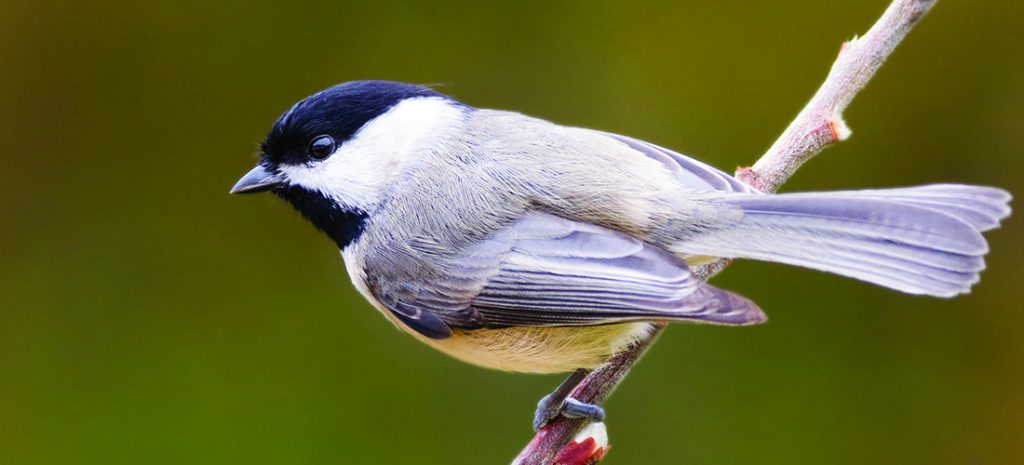Birdwatch

Working Without a Net
The bold, acrobatic Carolina chickadee
By Susan Campbell
The chickadee is one of the most beloved feeder birds across the country. Central North Carolina is no exception, but “our” chickadee species is the Carolina chickadee, merely one of five different chickadees commonly found in the United States.
Chickadee species are quite similar, but the Carolina averages the smallest — less than 5 inches in length. It also has a range that extends farthest south: from central Florida, throughout the Gulf States and across to central Texas. The Carolina chickadee overlaps with the more widely distributed black-capped chickadee in parts of Pennsylvania, Ohio and Illinois. Black-cappeds and Carolina chickadees are very challenging to separate in areas where they are both found. Subtle differences such as the coloration of the edges of the wing feathers and variations in the calls are used to tell them apart. Here in North Carolina, black-cappeds can be found at the highest elevations of the Appalachians.
Carolina chickadees reside in a variety of woodlands across the state, from the mountains to the Outer Banks. They feed on everything from insect larvae to seeds and berries. Their stout, pointed bill is a useful tool for both picking at and prying open food. And these little birds are quite the acrobats: They have very strong feet, which enable them to easily cling upside down when foraging. Carolina chickadees are regular customers year-round not only at our sunflower seed feeder, but on the suet cage feeder. They are very bold, driving off woodpeckers and wintering warblers to get at the protein-rich offerings.
Our chickadees are not migratory, so the same individuals are around from day to day. Family groups will associate from summer through late winter before the young wander away in search of mates of their own. If they are to do so, it has to happen quickly, because the breeding season starts early for these little birds. Carolina chickadees are looking for empty cavities or a small snag by the end of February. Nests of soft materials are built during the month of March. A thick outer layer of mosses or shredded bark is lined with animal fur or plant down. The nest conceals the eggs and insulates the young during the cool days and nights of early spring.
It is fun to watch female chickadees during their nest building. They are the busy architects with the males looking on, defending the territory from other chickadees or competing nuthatches. Clumps of fine cat or dog hair (puggle undercoat is very popular in our yard) will be gathered by the mouthful if available. Otherwise, chickadees will, believe it or not, seek out mammals such as raccoons and pick loose strands of fur to take back to their nests.
A pair of chickadees may raise four to six young in a year. If eggs are lost to predators or the weather, they may try again, provided it is not too late in the season. Often chickadees are replaced by bluebirds or titmice in birdhouses come May or June, once their young have fledged.
So keep an eye out. You may find you have a pair of these feisty birds that has set up housekeeping nearby, or perhaps you will see a new family of chickadees descend on your feeder like the Flying Wallendas. PS
Susan Campbell would love to receive your wildlife sightings and photographs at susan@ncaves.com.
